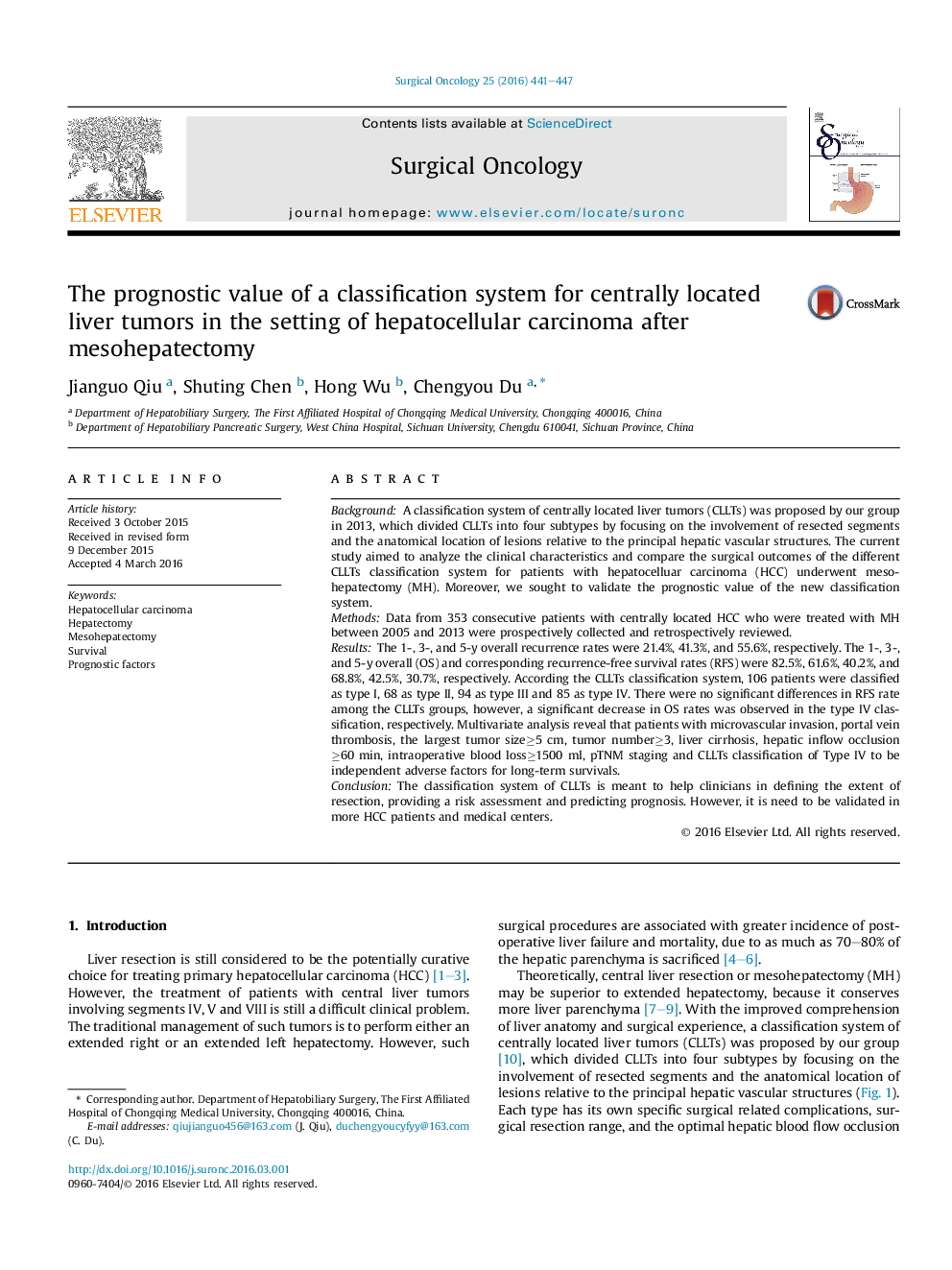| کد مقاله | کد نشریه | سال انتشار | مقاله انگلیسی | نسخه تمام متن |
|---|---|---|---|---|
| 6481956 | 1410637 | 2016 | 7 صفحه PDF | دانلود رایگان |
- Mesohepatectomy offers a surgical option to a group of patients with centrally located liver malignancies.
- A proposed classification of centrally located liver tumors was applied in current analysis. The classification system of CLLTs is meant to help clinicians in defining the extent of resection, providing a risk assessment and predicting prognosis.
- Classification of type IV patients suffered significantly higher recurrence rate and poorer long-term survivals.
- Several clinicopathologic variables were affected on the long-term survivals for patients underwent mesohepatectomy.
BackgroundA classification system of centrally located liver tumors (CLLTs) was proposed by our group in 2013, which divided CLLTs into four subtypes by focusing on the involvement of resected segments and the anatomical location of lesions relative to the principal hepatic vascular structures. The current study aimed to analyze the clinical characteristics and compare the surgical outcomes of the different CLLTs classification system for patients with hepatocelluar carcinoma (HCC) underwent mesohepatectomy (MH). Moreover, we sought to validate the prognostic value of the new classification system.MethodsData from 353 consecutive patients with centrally located HCC who were treated with MH between 2005 and 2013 were prospectively collected and retrospectively reviewed.ResultsThe 1-, 3-, and 5-y overall recurrence rates were 21.4%, 41.3%, and 55.6%, respectively. The 1-, 3-, and 5-y overall (OS) and corresponding recurrence-free survival rates (RFS) were 82.5%, 61.6%, 40.2%, and 68.8%, 42.5%, 30.7%, respectively. According the CLLTs classification system, 106 patients were classified as type I, 68 as type II, 94 as type III and 85 as type IV. There were no significant differences in RFS rate among the CLLTs groups, however, a significant decrease in OS rates was observed in the type IV classification, respectively. Multivariate analysis reveal that patients with microvascular invasion, portal vein thrombosis, the largest tumor sizeâ¥5 cm, tumor numberâ¥3, liver cirrhosis, hepatic inflow occlusion â¥60 min, intraoperative blood lossâ¥1500 ml, pTNM staging and CLLTs classification of Type IV to be independent adverse factors for long-term survivals.ConclusionThe classification system of CLLTs is meant to help clinicians in defining the extent of resection, providing a risk assessment and predicting prognosis. However, it is need to be validated in more HCC patients and medical centers.
Journal: Surgical Oncology - Volume 25, Issue 4, December 2016, Pages 441-447
